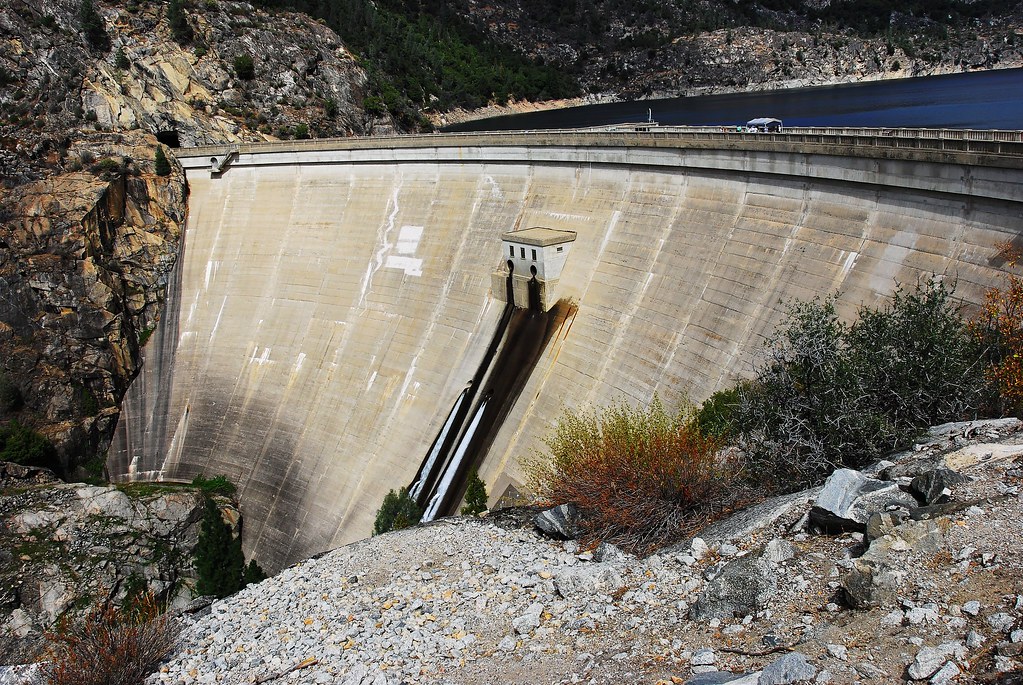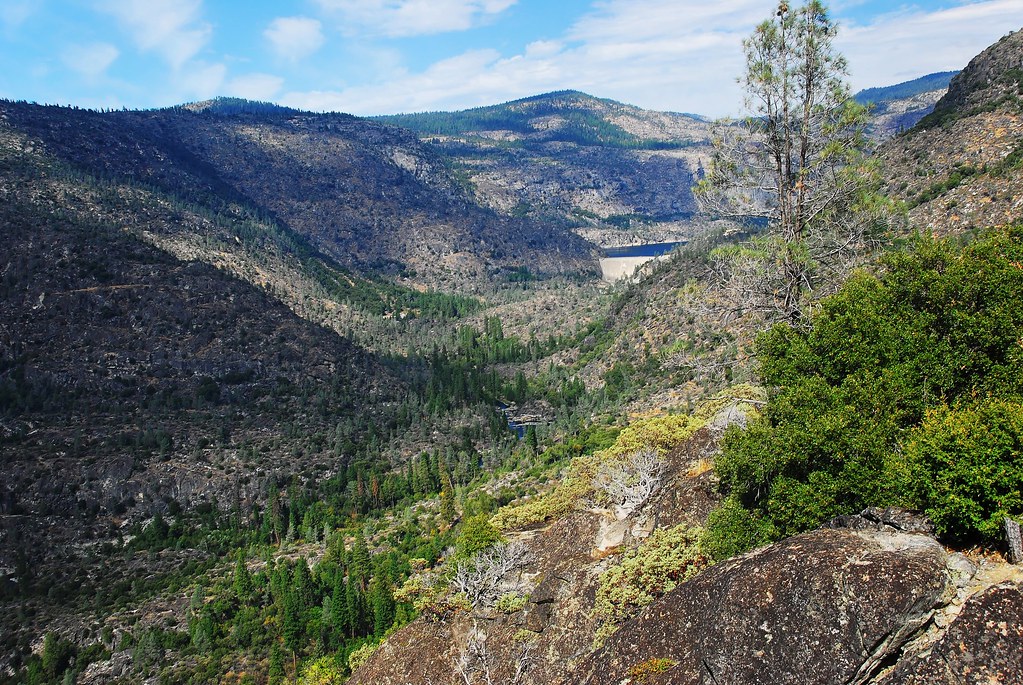Setting your book locally makes for easy, or easier, research. In CANALS, an alien monster is living in the irrigation canals running through and around Modesto. I drive by and over these canals every day; it was nothing to stop and look, and snap some pictures.
You can do the same if you live near or visit your settings. Then, when you write scenes set in these locations, you can whip out a photo or look at a digital image and make your writing more precise and realistic.
You can also make everything up. However, I find descriptive writing less mentally taxing than creative writing; electricity and I have something in common: we seek the path of least resistance.
Visiting or having pictures of your locations saves precious creative energy for plotting and dialog, where it's really needed. Daily creative time is finite, is it not?
I ventured further out of town for THE MIGHTY T, but still could drive to my locations to snoop and take photos. This is the O'Shaughnessy Dam:
 |
| O'Shaughnessy Dam at Hetch Hetchy |
See that room-like outcropping in the middle of the dam? Wait until you read what happens there!
Dams are magnificent and immensely useful structures. They're also controversial; good fodder for fiction. THE MIGHTY T deals with controversy surrounding this dam and the river it controls.
The O'Shaughnessy Dam made a lake out of the Hetch Hetchy Valley, which is part of Yosemite National Park. That it was built in the first place is tragic, but there it is, and only two hours away.
Seeing gates and buildings, and the dam itself, and having photos of them, helped tremendously when I wrote the novel. And saved brain-energy for biting action and dialog. (No people or animals are actually bitten in the book, but people are certainly harmed. It's a thriller, after all.)
You can look at other photos of the dam and lake here, if you so wish.
The second dam in THE MIGHTY T is the New Don Pedro Dam:
 |
| New Don Pedro Dam |
The New Don Pedro Dam is an earth-and-rock-fill dam and is the setting for the exciting conclusion of THE MIGHTY T. John Lightfoot attempts to... Later, Everett!
One scene took place in front of the dam, where nosy, plotting visitors aren't allowed, so no photos were possible: Google Earth came to the rescue. I relied on Google Earth quite a bit, at both locations. It shows elevations, allows you to measure distances, and lets you nose around in places the authorities don't allow. Again, making the action more accurate while preserving creative energy.
I feel sorry for you poor science fiction authors, who have to make everything up! My brain would ooze from my ears if I had to do that.
A parting shot of the O'Shaughnessy Dam, in proper perspective:
 |
| The Dammed Hetch Hetchy Valley |
Been there. Very beautiful and yes a great place for a thriller. I live near an earthen dam at lake Isabella in California. It could go when the next quake hits. Hmmm sequel Like your book and hope to say something good about it soon. Reggie
ReplyDeletehttp://characterswellmet.blogspot.com
Hmm... Hopefully you don't live downstream of the dam.
ReplyDeleteKeeping it local keeps it authentic, for sure. The reader can tell. The ability to give concrete details gives the imagery substance, and gives the author confidence.
ReplyDeleteThat looks like a beautiful place.
It's a stunning place, referred to often as "Yosemite's little sister" because the valley isn't as big as Yosemite. It has it's own little Half Dome.
ReplyDeleteSir -- You've made one semantical or definitional mistake when you say O'Shaughnessy Dam made a "lake" out of Hetch Hetchy Valley.
ReplyDeleteMother Nature, frequently in collaboration with the good Lord above, makes lakes. Organizations like the Corps of Engineers, the SF Public Utilities Commission, etc. make reservoirs. There's a difference.
Sam
Well Sam, reservoirs are artificial lakes. The terms are interchangeable by use, if not by definition. The body of water created by the New Don Pedro Dam is called Lake Don Pedro, and there are also Lake McClure and Lake McSwain, both created by dams.
ReplyDelete